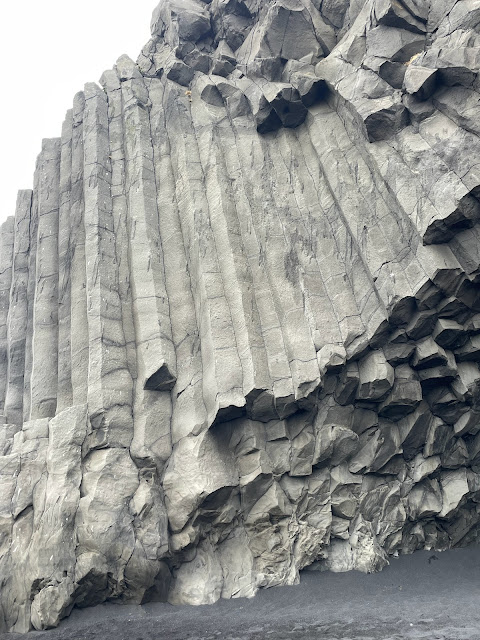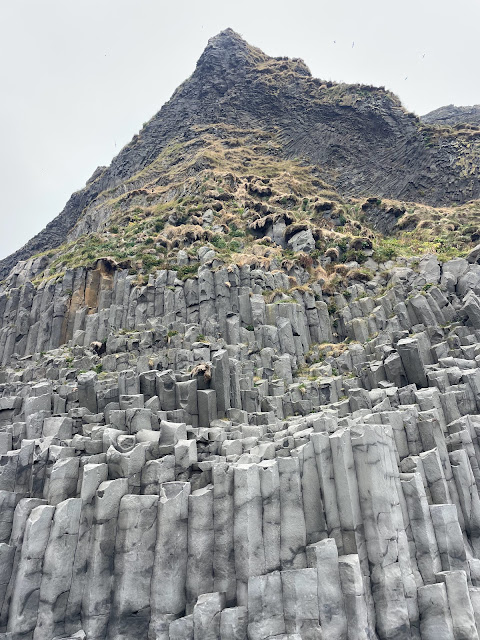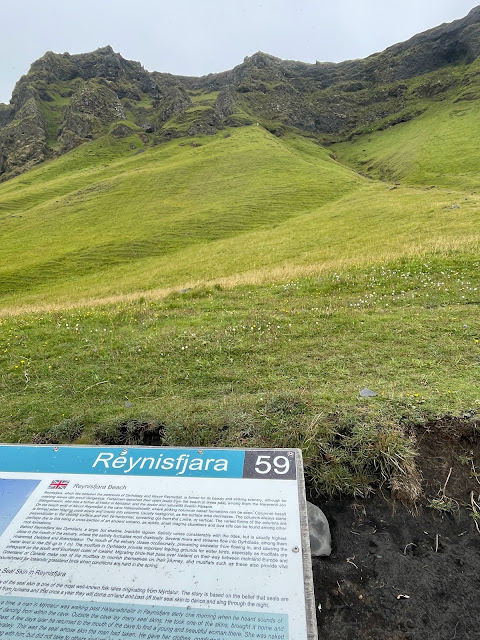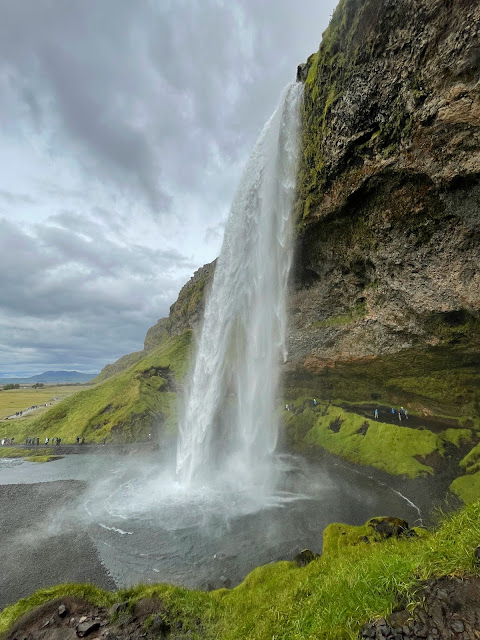August 17: Reynisfjara Beach, Skogafoss & Seljalandsfoss
After a busy morning of cooking and doing laundry at Vik Campsite, we headed out on another busy day in Iceland. Today, we visited three popular tourist attractions as we made our way toward Reykjavik.
Our first stop was to Reynisfjara Beach, which is famous for its volcanic black sand, prominent rock formations jutting out of the sea, hexagonal basalt columns and sea caves. It is thought by many to be one of the most beautiful spots in Iceland.
Reynisfjara Beach is not only known for its dramatic landscape but also for its rich folklore and geological significance. The towering basalt sea stacks, known as Reynisdrangar, are said to be the remnants of two trolls who tried to drag a three-masted ship to shore but were turned to stone by the rising sun. In reality, these formations were shaped by volcanic activity and centuries of relentless ocean waves. Additionally, the beach is infamous for its powerful sneaker waves — sudden, unpredictable waves that have caught many visitors off guard. Signs throughout the area warn tourists to keep a safe distance from the shoreline, as the ocean has claimed more than a few lives over the years. It’s a place where beauty and danger coexist, reminding us of the raw power of nature.
Next stop was Skogafoss for an intense, close up look at a powerful waterfall. According to the Reykjavik tour guide, “Skogafoss is a jaw-dropping 227 feet (around 60 meters) high with a width of 25 meters.” I, along with a few other tourists, got drenched as we got a little too close to the cascading waters. The source of all this liquid is the Skoga river, which flows from the spring beneath the Eyjafjoll mountains.
Finally, we arrived at Seljalandsfoss where we had a 360 degree view of a spectacular waterfall with amazing views from the front, side and back. According to Wikipedia, “The waterfall drops 60 m (197 ft) and is part of the Seljalands River that has its origin in the volcano glacier Eyjafjallajökull.” It was my favorite stop of the day.
One of the most fascinating facts about Seljalandsfoss is that it is one of the few waterfalls in the world where you can walk behind the cascading water. The footpath that circles the waterfall offers a rare, up-close experience with breathtaking views from every angle. Legend has it that a chest of gold was once hidden in a cave behind the falls, and though the chest was said to have been partially found, it slipped back into the water and was never fully recovered. As we carefully navigated the slippery path behind the waterfall, the mist soaking our jackets, it was easy to imagine the allure of hidden treasure and the powerful force of nature that continues to shape this incredible landscape.
We ended up at a free campsite with toilets, showers and a kitchen. The owners simply ask for a small donation so that they can keep the facility free for visitors.

























Comments
Post a Comment